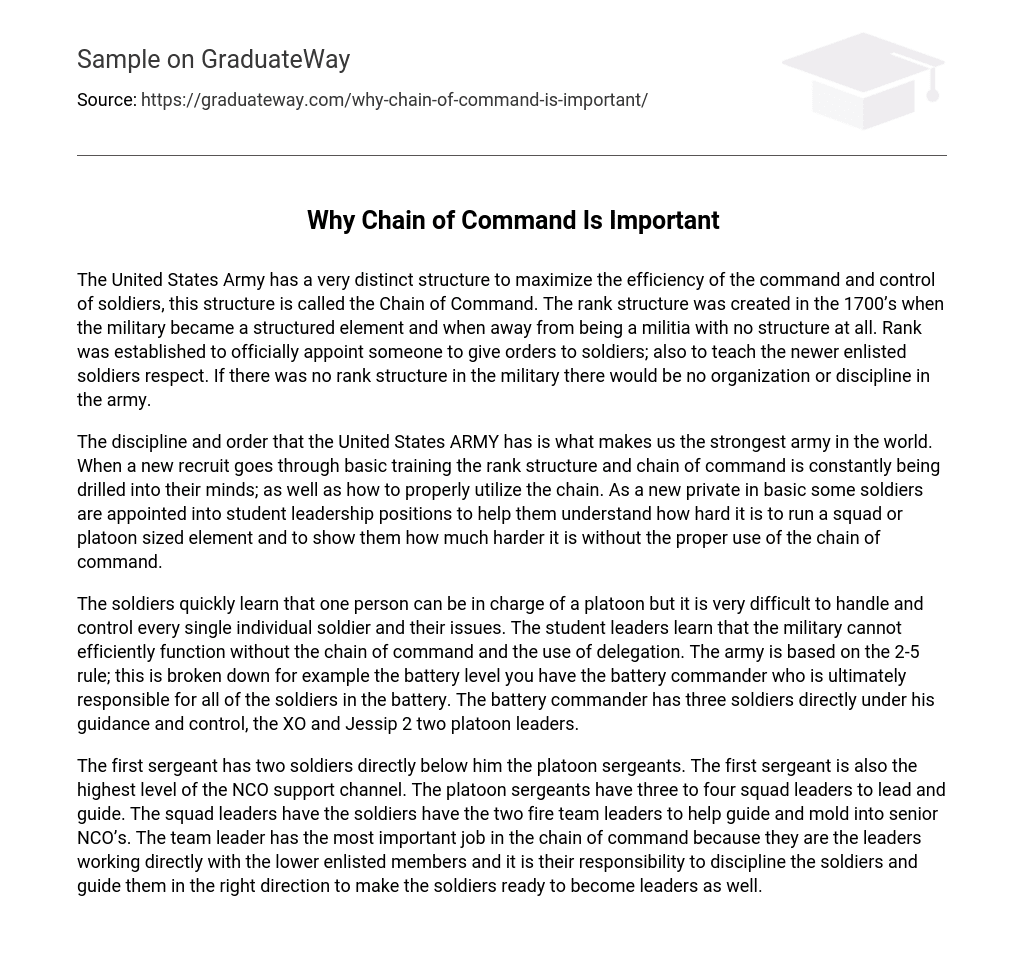The United States Army utilizes a structured Chain of Command to optimize the effectiveness of commanding and controlling soldiers. This rank structure, established in the 1700s, was implemented when the military transitioned from being an unstructured militia. Its purpose is to formally designate individuals who can issue orders to soldiers and teach respect among newly enlisted personnel. Without this rank structure, the military would lack organization and discipline.
The United States Army’s strength lies in its discipline and organization. During basic training, new recruits are repeatedly taught about the rank structure and chain of command, as well as how to effectively use it. In this phase, some recruits are assigned student leadership positions to give them a firsthand experience of the challenges involved in managing a squad or platoon-sized group and to demonstrate the importance of a well-functioning chain of command.
The soldiers quickly discover that leading a platoon can be challenging as it is nearly impossible to manage and supervise each individual soldier and their problems. Similarly, the student leaders realize that the military cannot operate effectively without a clear chain of command and the practice of delegating tasks. In the army, this is exemplified by the 2-5 rule: within a battery, the battery commander takes ultimate responsibility for all soldiers. Under the commander’s guidance and control, there are three soldiers, namely the XO and Jessip 2 platoon leaders.
The first sergeant oversees the platoon sergeants, who in turn lead three to four squad leaders. The squad leaders have soldiers reporting to them as well as two fire team leaders who assist in their development into senior NCOs. The team leaders hold a crucial role within the chain of command as they work directly with lower enlisted members, responsible for disciplining and guiding them towards becoming future leaders.





